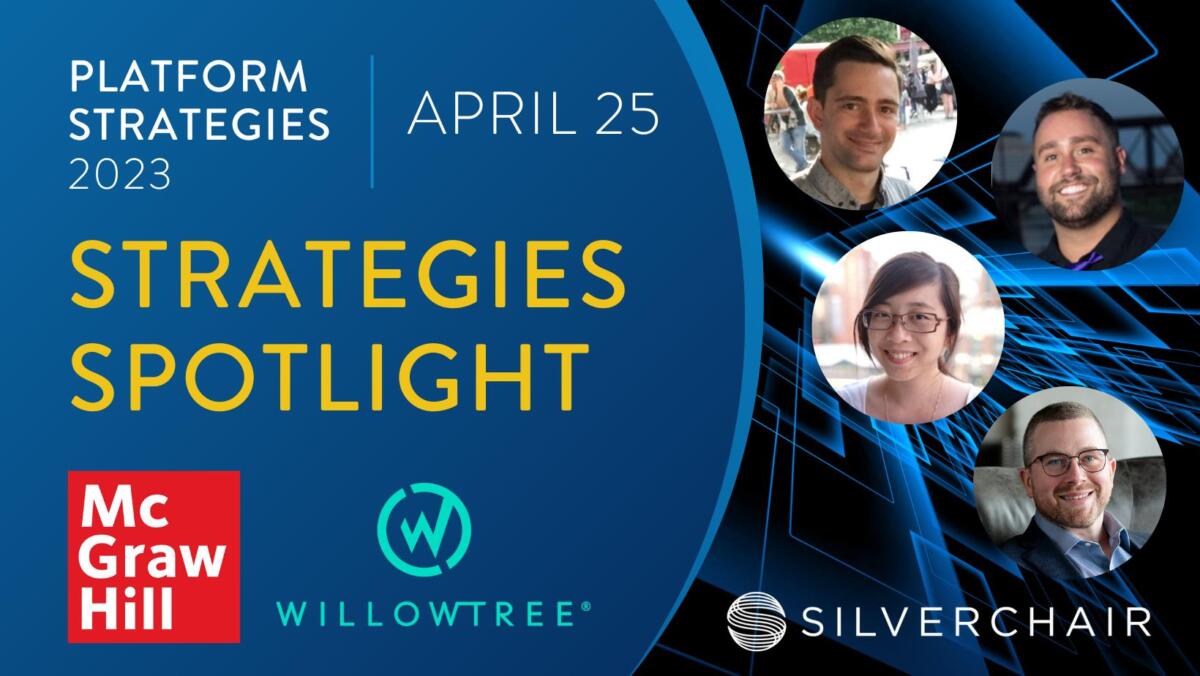Currently featuring everything from books and videos to infographics and diagnostic tools, iterative updates to the app will offer additional bidirectional syncing between app and web, affinities-powered recommendations, and Q+A content experiences. Below, we share some of the team’s takeaways and best practices throughout their process of working together from our April Strategies Spotlight: Appetizing Your Content.
Speakers:
Justin Bale, Project Director, WillowTree
Matt Abraham, Product Owner, Silverchair
Rhiannon Wong, Senior Product Manager, McGraw Hill
Will Schweitzer, President, Silverchair (Moderator)
WS: When you have long-standing products, there's a lot of complexity you have to rationalize, puzzle through, and test against. This "mega group" has done something incredible: introduce a third party and develop an impressive end-user-focused application. How did you make this work and how did you approach any speed bumps or challenges?
JB: I would love to start with one of the most important things that we all homed in on from the beginning. That was to ensure that the team felt like one cohesive group, all contributing and collaborating to one product instead of three individual entities that were each given their part. The various ways that we work together in collaborative documentation made sure that we all feel as if we are part of one team, because that is truly what we are.
MA: At Silverchair we do a lot of third-party integrations. But a lot of these, in my experience as product owner, are relatively short timelines. A couple of months or a few sprints, at most. It is a completely different type of working relationship that we have with WillowTree, which is long term. So, as Justin said, it became important to ensure we had a cohesive feeling amongst everyone in this larger group. That we had communication in the right ways and in ways that made sense for everyone, given that we also have other things going on.
RW: We knew there would be things to figure out such as meeting cadence, tooling for how we're going to stay connected, and where information would live. And the less tangible items behind that were just that we were all really excited about this large initiative. All having that collective endpoint to work towards together really helps.
JB: There certainly continue to be opportunities for us to understand across industries and technology stacks, including the comparison between legacy systems and front-end app development. We have spent a lot of time making sure that we are saying the same things as we collaborate. That has been one of the bigger lessons learned. Also, a very core understanding between all of us is assuming positive intent and knowing that we are all working toward the same goal. So, any time that we have hit the many speed bumps we have, approaching the problem from that perspective has led to the continued partnership being so strong and making sure that we are all putting our best foot forward.
MA: From my perspective, it was important to recognize what the issue was in the moment instead of focusing on how it came about quite yet. We focused on whatever needed to happen, whether it was fixing a quick problem, or pulling in others to support. Then later we'd look back and say, “OK, now let's look at this more holistically and try to understand how this arose in the first place and see what we can do in the future to remediate it.” We did a full retro retrospective experience at the end of Q1 this year as we wrapped up phase one of the app. We got together and had a productive hour that enabled us, at a very high level, to look at our ways of working and how we wanted to adjust. That really informs what we are doing now.
JB:One of the biggest takeaways was that we needed to measure and adjust more frequently. We needed to make sure we stayed in line with the collaborative tools we used and how we communicated. We evaluated the effectiveness and order of meetings to ensure that we were having discussions and achieving alignment in the appropriate sequence.
Want to hear more? Check out the full webinar, Appetizing Your Content or join us at Platform Strategies this September in DC!
